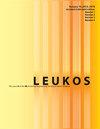建筑、照明和近视流行
IF 2.6
2区 工程技术
Q2 CONSTRUCTION & BUILDING TECHNOLOGY
引用次数: 1
摘要
近视,也被称为近视,是一种眼部疾病,最常开始于儿童早期,并在青春期后期发展。它曾经相对罕见,但在几代人之内,它的患病率已经上升(Morgan et al. 2018;Williams et al. 2015),现在是一种全球流行病,比例惊人(WHO 2016)。霍尔顿等人(2016)预测,到2050年,全球50%的人口将受到影响,高于目前的34%和2000年的23%。严重形式的近视(高度近视)与青光眼和视网膜脱离导致视力丧失的风险增加有关(Williams and Hammond 2019)。目前的近视干预措施强调临床治疗而不是预防,并侧重于药物和屈光矫正(Cooper and Tkatchenko 2018)。据估计,未经矫正的屈光不正每年造成的全球GDP损失超过2000亿美元(Naidoo等人,2019年)。引起近视的因素有很多。对遗传易感性的研究表明,任何单个基因的影响都很小(Morgan and Rose 2019),无法解释这种疾病的加速流行。这使得近视领域重新聚焦于人类生活环境的变化是否导致近视的问题。这种想法是合乎逻辑的,不仅因为遗传学解释不充分,而且因为眼睛的生长和焦距优化是依赖于光的。在环境影响类别中,有人提出过度关注近视场视觉任务(Morgan et al. 2021;Wildsoet et al. 2019),昼夜节律中断(Chakraborty et al. 2018;Stone et al. 2013),而影响光照的地理和季节因素(Cui et al. 2013)可能是致病因素。然而,除此之外,流行病学研究一再表明,户外活动时间与近视减少有关(Sherwin et al. 2012;Xiong et al. 2017),而在室内度过的时间是风险因素(Morgan et al. 2021)。外面的照明环境是怎样防止近视的呢?最近的基础科学发现有助于使一个假设具体化。动物的光感应蛋白被称为视蛋白(Shichida and Matsuyama 2009)。人眼包含至少六种视蛋白,其中四种通过视杆和视锥感光器参与我们的视觉功能。其余两种是所谓的非视觉视蛋白,黑视蛋白(OPN4)和神经视蛋白(OPN5)。临床前研究表明,所有六种视蛋白都参与了眼睛生长和焦距优化的调节(Brown et al. 2022)。黑视素的光敏感度峰值在480纳米左右,呈天蓝色。这种视蛋白在全身昼夜节律功能中发挥作用,但也通过其视网膜表达调节眼睛生长和焦距(Chakraborty et al. 2022)。Neuropsin在这个讨论中是特别有趣的,因为它在380纳米的峰值灵敏度,这是一个紫色的波长,在大多数成年人的视觉感知的边缘。与黑视素一样,紫光- opn5反应的临床前研究表明,它调节眼睛生长和焦距(Jiang et al. 2021)。更具体地说,当OPN5受到紫光刺激时,眼睛的近视伸长受到抑制(Jiang et al. 2021)。这些基础科学发现得到了人类研究的补充:Torii等人(2017a)发现,与那些戴上阻挡紫光的镜片的近视儿童相比,戴上透射紫光的矫正镜片的近视进展更少。同样,在近视的成年人中,Torii等人(2017b)发现,佩戴紫色透光率较高的镜片与近视进展较少相关。将这些研究结合起来,得出了这样的假设:近视激增(Dolgin 2015)可能是由现代生活方式导致的,这种生活方式导致人们没有充分接触刺激OPN5的紫光(Jiang et al. 2021)。《白血病》2023卷,第19期。1,1 - 3 https://doi.org/10.1080/15502724.2022.2141503本文章由计算机程序翻译,如有差异,请以英文原文为准。
Buildings, Lighting, and the Myopia Epidemic
Myopia, also known as nearsightedness, is an eye disease that most often begins in early childhood and progresses through late adolescence. It was once relatively rare, but within a few generations it has grown in prevalence (Morgan et al. 2018; Williams et al. 2015), and is now a global epidemic of astonishing proportions (WHO 2016). Holden et al. (2016) predict that 50% of the world’s population will be afflicted by 2050, up from 34% today and 23% in 2000. A severe form of myopia (high myopia) is associated with increased risk of vision loss through glaucoma and retinal detachment (Williams and Hammond 2019). Current myopia interventions emphasize clinical treatments rather than prevention and focus on medications and refractive correction (Cooper and Tkatchenko 2018). Uncorrected refractive error has been estimated to cost more than $200 billion annually in global GDP (Naidoo et al. 2019). Many factors have been considered in myopia causation. Studies of genetic predisposition showed that the effect of any individual gene is small (Morgan and Rose 2019) and could not explain accelerating prevalence of the disease. This has refocused the myopia field on the question of whether changes in the human living environment are causing myopia. This thought progression is logical, not only because genetics are an inadequate explanation, but also because eye growth and focal length optimization are lightdependent. In the category of environmental influences, it has been proposed that excessive focus on nearfield visual tasks (Morgan et al. 2021; Wildsoet et al. 2019), circadian rhythm disruption (Chakraborty et al. 2018; Stone et al. 2013), and geographical and seasonal factors that influence light exposure (Cui et al. 2013) might be causative. However, in addition, and germane to this discussion, epidemiological studies have repeatedly shown that time spent outdoors is associated with myopia reduction (Sherwin et al. 2012; Xiong et al. 2017), while time spent indoors is a risk factor (Morgan et al. 2021). What is it about the outside lighting environment that can protect against myopia? Recent basic science discoveries have helped to crystalize a hypothesis. The light sensing proteins of animals are called opsins (Shichida and Matsuyama 2009). The human eye contains at least six opsins, four of which are involved in our visual function through rod and cone photoreceptors. The remaining two are the socalled nonvisual opsins, melanopsin (OPN4) and neuropsin (OPN5). Preclinical studies have implicated all six opsins in the regulation of eye growth and optimization of focal length (Brown et al. 2022). Melanopsin has a peak light sensitivity around 480 nm, a sky-blue color. This opsin has a role in systemic circadian function, but also regulates eye growth and focal length through its retinal expression (Chakraborty et al. 2022). Neuropsin is of special interest for this discussion because it has a peak sensitivity at 380 nm, a violet wavelength that is at the edge of visual perception for most adults. As with melanopsin, preclinical studies of the violet light-OPN5 response have shown that it regulates eye growth and focal length (Jiang et al. 2021). More specifically, when OPN5 is stimulated by violet light, myopic elongation of the eye is suppressed (Jiang et al. 2021). These basic science findings are complemented by studies performed in humans: Torii et al. (2017a) found that myopic children with corrective lenses that transmitted violet light had less myopic progression than those with lenses that blocked violet light. Likewise, in myopic adults, Torii et al. (2017b) found that wearing lenses with more violet light transmittance was associated with less myopic progression. When combined, these studies have led to the hypothesis that the myopia boom (Dolgin 2015) may be caused by a modern lifestyle that results in insufficient exposure to the violet light that stimulates OPN5 (Jiang et al. 2021). LEUKOS 2023, VOL. 19, NO. 1, 1–3 https://doi.org/10.1080/15502724.2022.2141503
求助全文
通过发布文献求助,成功后即可免费获取论文全文。
去求助
来源期刊

Leukos
工程技术-光学
CiteScore
7.60
自引率
5.60%
发文量
19
审稿时长
>12 weeks
期刊介绍:
The Illuminating Engineering Society of North America and our publisher Taylor & Francis make every effort to ensure the accuracy of all the information (the "Content") contained in our publications. However, The Illuminating Engineering Society of North America and our publisher Taylor & Francis, our agents, and our licensors make no representations or warranties whatsoever as to the accuracy, completeness, or suitability for any purpose of the Content. Any opinions and views expressed in this publication are the opinions and views of the authors, and are not the views of or endorsed by The Illuminating Engineering Society of North America and our publisher Taylor & Francis. The accuracy of the Content should not be relied upon and should be independently verified with primary sources of information. The Illuminating Engineering Society of North America and our publisher Taylor & Francis shall not be liable for any losses, actions, claims, proceedings, demands, costs, expenses, damages, and other liabilities whatsoever or howsoever caused arising directly or indirectly in connection with, in relation to, or arising out of the use of the Content. Terms & Conditions of access and use can be found at http://www.tandfonline.com/page/terms-and-conditions .
 求助内容:
求助内容: 应助结果提醒方式:
应助结果提醒方式:


